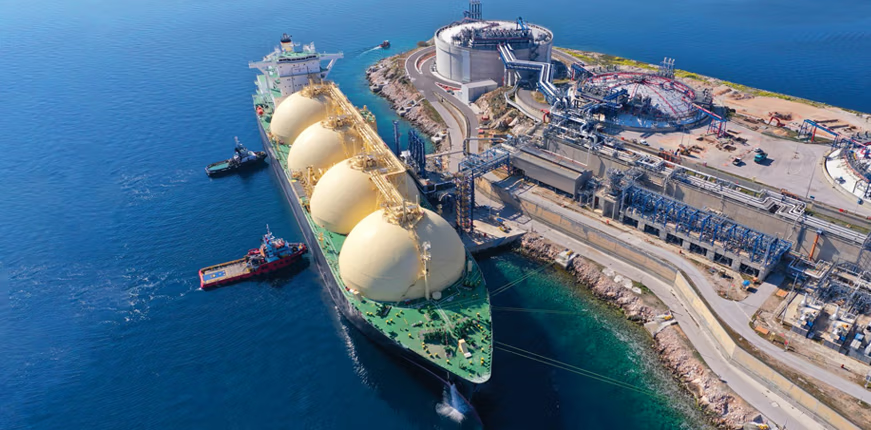Why the U.S. Will Become The World’s Largest LNG Exporter.

The United States is positioning itself to become the world’s largest exporter of liquified natural gas (LNG) once again in 2023.
The U.S. has been the world’s largest producer of petroleum since 2018 and the largest producer of natural gas since 2011. During the first two quarters of 2022, the U.S. also became the largest LNG exporter for the first time.
Qatar surpassed the U.S. for LNG exports in May 2022, reclaiming its long-held title, but LNG exports are one of the most promising areas for growth in the U.S. oil and gas sector in 2023.
Here’s what you need to know about the suddenly-tight LNG market and the response of U.S. exporters.
The Effects of the War in Ukraine on the LNG Market
The European Union imports 90% of the gas it consumes. Russia accounts for around 45% of those imports, according to a press release by the European Commission.
When Russia invaded Ukraine on February 24, 2022, the EU began establishing a plan to phase out its dependence on Russian fossil fuels. In March, the EU announced it would stop using Russian gas by 2030.
Because the EU used around 155 billion cubic meters of gas from Russia in 2021, it created a record-tight natural gas market. The EU began scrambling to immediately find alternative sources of liquified and piped gas after Russia’s largest gas pipeline to Europe suddenly experienced unexplained damage.
Though the International Energy Agency expects global gas consumption to grow by less than 1% in 2023, this minor increase in demand will strain Europe’s already tense market.
The uncertain supply and increased demand created turmoil in the European natural gas market, leading to historically high natural gas prices in 2021 and 2022.
Until the March 2022 ban, the U.S. also imported Russian oil, liquefied natural gas and coal. Because of the strength of domestic natural gas production, the U.S. has shielded itself from some of the tumult experienced abroad.
Consequently, the conflict has thrust the U.S. into the spotlight as an alternative LNG exporter. Shortly after the ban, the U.S. and EU published a joint statement that announced LNG exports from the U.S. to Europe would increase through 2030.
How the U.S. Has Responded to the New Demand
The U.S. first began exporting LNG in 2016, according to the U.S. Energy Information Administration. Since then, the Lower 48 states have rapidly increased their export capacity, leading the U.S. to become the third-largest LNG exporter in 2019.
With the urgent demand in Europe, the U.S. increased LNG exports by 11% in the first 10 months of 2022 compared to 2021, for an average of roughly 11.2 billion cubic feet per day. Reuters reported that LNG exports to Europe increased by nearly 150% during the same period.
As the U.S. vies with Qatar for the top spot in LNG exports, all eyes are on the LNG projects under construction that have the potential to increase the U.S.’s export capacity. The Calcasieu Pass LNG terminal recently went online, and a sixth train at the Sabine Pass plant began service, both of which have the potential to support the growing gas demand.
What This Means for the Oil & Gas Industry in 2023
How early in 2023 the U.S. can become the leading LNG exporter again will depend on how midstream and downstream capacities grow. The Appalachian region and West Texas have recently seen slowing production, which some companies have attributed to inadequate pipeline infrastructure.
Despite the uncertainty, U.S. LNG exports will likely remain at or near the country’s capacity throughout 2023, with the EIA only projecting a slight decline in the third quarter. If the U.S. makes producing and exporting LNG a priority, its capacity could quickly grow in 2023.
About Catco
Catco helps companies in the oil and gas industry build energy resilience by ensuring their natural gas production, processing, transportation and distribution continue in any condition. Learn how our products can support your business by scheduling your discovery call today.

